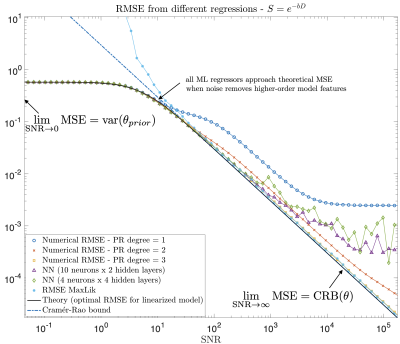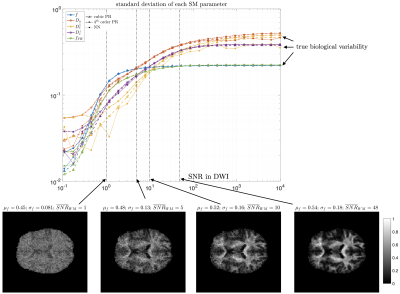Santiago Coelho1, Els Fieremans1, and Dmitry S. Novikov1
1Center for Biomedical Imaging and Center for Advanced Imaging Innovation and Research (CAI$^2$R), Department of Radiology, New York University School of Medicine, New York, NY, United States
1Center for Biomedical Imaging and Center for Advanced Imaging Innovation and Research (CAI$^2$R), Department of Radiology, New York University School of Medicine, New York, NY, United States
We develop a theory to analyze how much the prior distributions affect parameter estimates in supervised data driven regressions. Theory is validated numerically and on white matter Standard Model in vivo.

Root mean squared error in the training data as a function of the SNR in the measurements. For high SNR the regression method needs a higher order than linear to do an optimal fit. Since the model is nonlinear and the analytical inversion requires a logarithm, as we increase the SNR, polynomials become suboptimal. For low SNR all regressions perform equally well, and their behaviour is represented by the theory.

Standard deviation of three regression methods for each parameter in the SM. As Eq. 2 shows, for high SNR the variance reaches the values in the training while for low SNR it tends to 0. Maps for f estimated for the high SNR data (right) and different levels of artificially decreased SNR (values are an average over a WM ROI). Even though the noise increases from right to left, the standard deviation of the values decreases (WM ROI). The corresponding SNR values are highlighted, the trend observed is similar. Additionally, the mean values get closer to the expected value of the prior used.